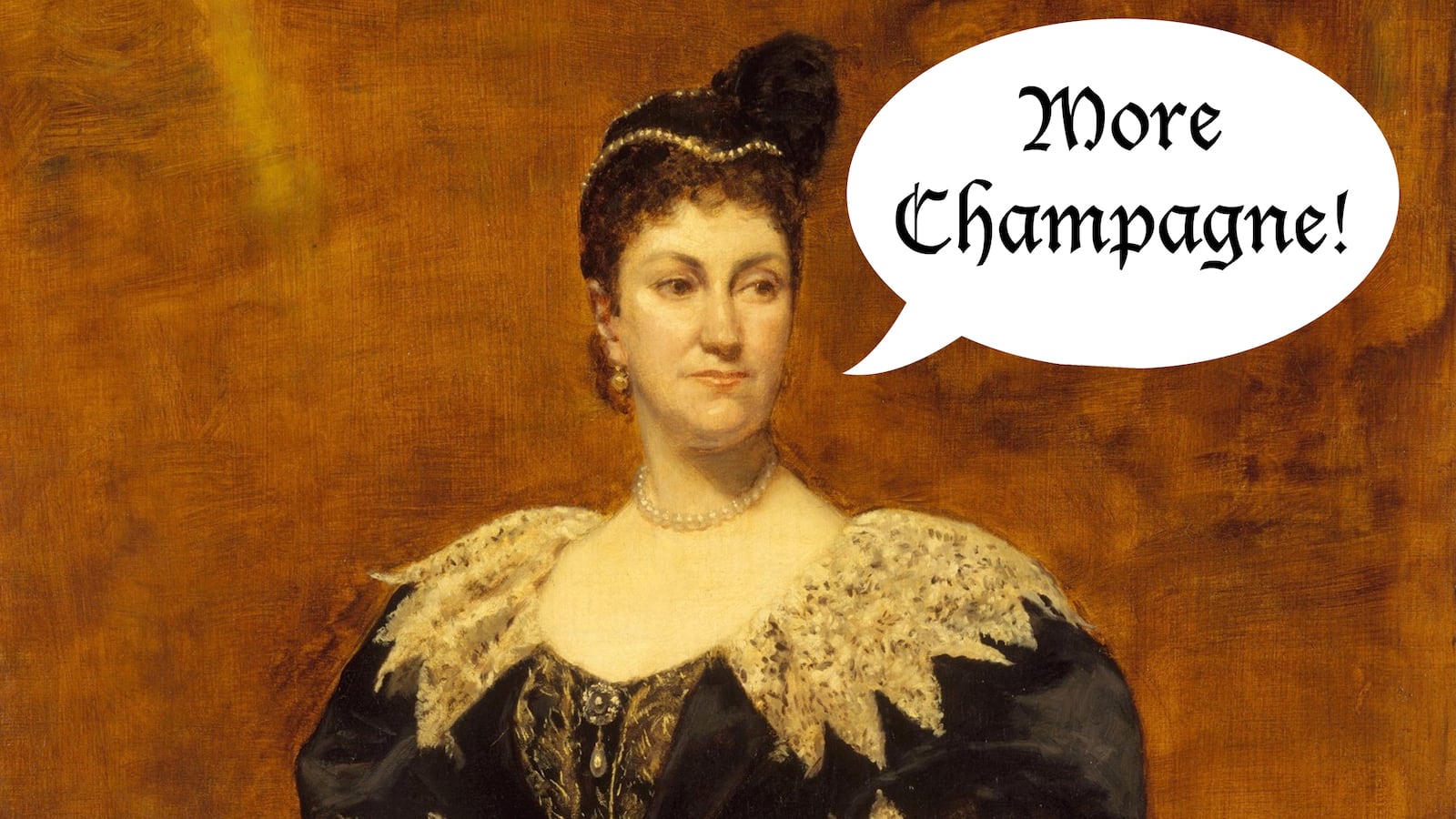Yes, a difficult situation. Imagine a Manhattan with parvenus moving in, vulgarly flaunting New Money, some way, way richer than the Old Money.
Sounds familiar? Well, this was the last half of the 19th century and the new money was born of the Industrial Revolution but fortunately there was an individual determined to maintain standards, Caroline Astor.
Caroline was the “Mrs. Astor”, a position she promptly assumed after the death of her sister-in-law (which caused the defeated Astor cousin to relocate in the UK, become a newspaper magnate and acquire a title).
Mrs. Astor also persuaded her husband to drop his second name, Backhouse, which then had the secondary meaning, outhouse, and set to work to reform society, using her cousin-by-marriage, Ward McAllister, a Francophile, and an expert in wines and sauces, as an enforcer.
One device, and this was the idea of McAllister—soon to be nicknamed “Make-A-Lister” by the very active, if spoon-fed press—was the Patriarch Balls. McAllister picked twenty-five utterly acceptable New Yorkers, requiring each of them to cull their acquaintanceship and come up with five females and four males.
The idea was a mix of “Nobs” and “Swells.” “Nobs” came from the Old Money and “Swells” were representatives of the New Money who Astor and McAllister felt—in his words—“at ease in a ballroom.”
The entire group made up the list for a ball, which was held every year, beginning in 1872.
Which brings us to the supreme event: The 400 ball of February 1892. And it was McAllister again who came up with the notion of 400, this being, he said, the number of people who could be comfortably accommodated in Mrs. Astor’s ballroom—and, by extension, were the absolute cream of New York society at that moment.
“Wait a moment and I will give you a correct list, don’t you know, of the people who form what is known as the Four Hundred,” McAllister told the New York Times. “Do you understand it will be authorized, reliable, and, don’t you know, the only correct list.”
The number of names is actually below 400, being 370 plus. So it’s as if Mrs. Astor and Ward McAllister were signaling that they were being hyper-scrupulous, and that those attending were the crème de la crème, that anybody who didn’t make the cut might as well get out of town.
There was nothing remotely bohemian about the list—no professional writers, artists, musicians, actors—indeed no celebrities in our sense. Just power, blood, mostly Old Money but plenty of New Money too.
Mrs. Astor watched the dancing from a red velvet divan standing on a dais. She was described by Frank Crowninshield, the editor of Vanity Fair, as “tall, a little on the heavy style, dark, with a slight, but not disfiguring, cast in her eyes.”
Her hair was jet-black—she never ever appeared in daylight except heavily veiled — and she had particularly favored guests sent for.
She would shake hands—the air kiss had not as yet been invented—and exchange a few words. And that was social glory.
Ward McAllister’s days as social minder to Mrs. Astor—who he called his “Mystic Rose”—were numbered though. It was clearly with her approval of Mrs. Astor that he gave the party list to the New York Times, but his craving for social celebrity led him to canoodle with the press in a way that the society within which he sought to be an arbiter found unappealing.
He had already published a memoir, Society As I Have Found It, in which he comes across as an overweening blowhard. The press he had so cultivated turned him into a figure of fun.
Doors closed to him all over town. He died, dining alone in the Union Club on January 1895. His funeral was attended by Cornelius Vanderbilt but not by Caroline Astor.
This was appropriate. There were Vanderbilts at the 400 Ball, but Mrs. Astor had let it be known that she considered the clan to be unacceptable.
Thus it was that Carrie Astor, her daughter, had found herself uninvited to the lavish, eagerly awaited costume ball given by Alva Vanderbilt of spring 1883.
She appealed to her mother, who felt required to formally leave her card with Mrs. Vanderbilt.
Mrs. Astor died, suffering from dementia, in 1908. John Jacob Astor, her son, went down with the Titanic four years later.
New York society went into a curious phase after the eclipse of Caroline Astor and the flame-out of Ward McAllister.
It was now ruled by “The Great Triumvirate”—“Tessie” (Theresa) Fair, Alva Vanderbilt Belmont, and Mamie Fish (Mrs. Stuyvesant Fish). They were three formidable hostesses who I would call no-nonsense women, except that nonsense was highly in demand.
There was the dinner that Mrs. Stuyvesant Fish, gave for the Prince del Drago, who, rather to the surprise of the other guests, turned out to be a monkey (Mrs. Fish, famously sharp-tongued, greeted her guests at another dinner, sighing “Older faces, younger clothes.”).
There was the “Servants’ Ball,” at which the guests dressed as their own staff, and there was a “Dogs’ Dinner” which actually was that, write Gail MacColl and Carol McD. Wallace in their book, To Marry an English Lord.
Just ahead lay ‘café society,’ Noel Coward and, of course, the Surrealists who had some inventive dinners too.
When I moved to Manhattan in the late 70s many of the names on Ward McAllister’s ‘400’ list were still frequently to be seen in boldface in the columns, sometimes with the same first names attached.
I seldom see them any more. Constant change, that’s the pain and pleasure of New York.






